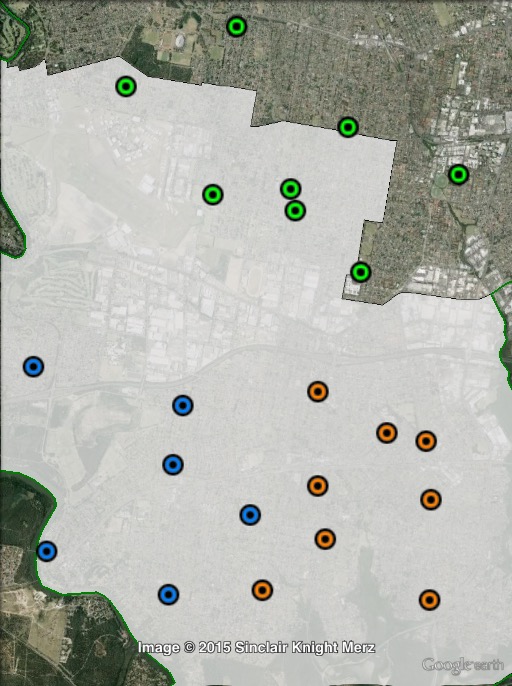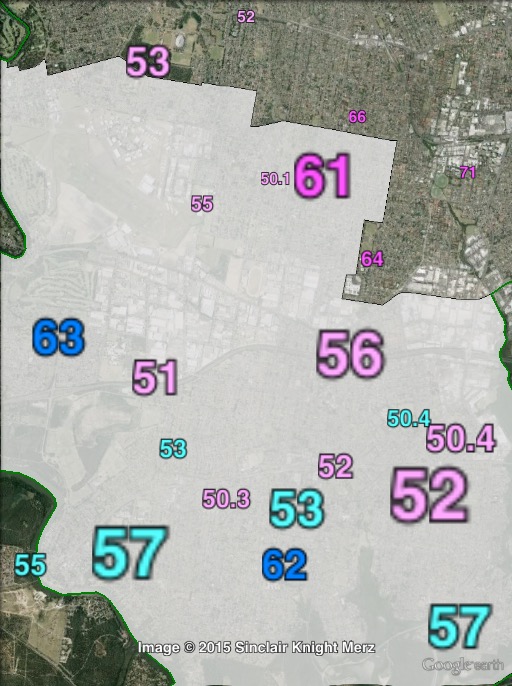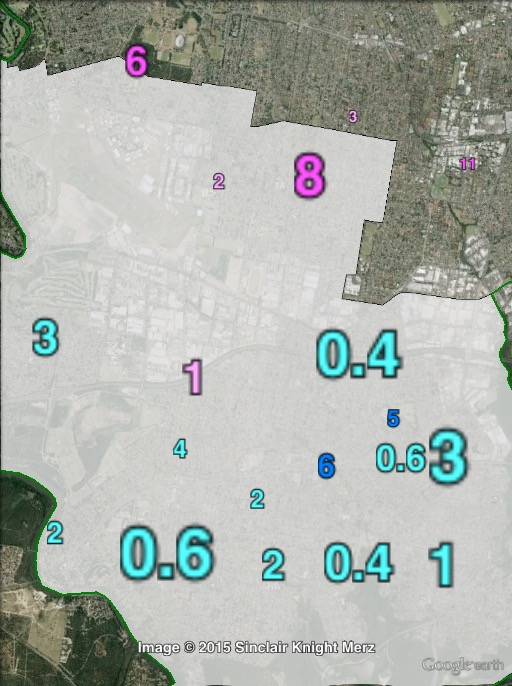
East Hills was one of the last seats the Liberal Party gained off Labor in 2011, with Liberal candidate Glenn Brookes winning the seat off Labor’s Alan Ashton by less than 500 votes. The recent redistribution was unfavourable to Brookes, cutting his margin from 0.6% to 0.2%, and making East Hills the most marginal seat in the state.
With Labor gaining a large swing back at this election, you would have expected Labor to easily win back East Hills.
But while Labor gained over a dozen other seats, and generally gained a large swing in most seats, Labor was unable to overcome the tiny margin in East Hills.
On current figures, Brookes is on 51.1% of the two-party-preferred vote, which is a swing of 0.9%. This figure will change on late counting, since the two-party-preferred count hasn’t yet been conducted on pre-poll and absent votes.
While there was very little movement in the overall vote, this masks some interesting trends in different parts of the seat.
In the pre-election guide, I split booths in East Hills into three parts: north, south-east and south-west. The north covers those booths close to Bankstown, while the two southern areas cover those closer to the Georges River.
| Voter group | LIB 2PP % | ALP 2PP % | LIB swing | Total | % of votes |
| South-East | 51.3 | 48.7 | 2.0 | 15,595 | 33.0 |
| South-West | 55.1 | 44.9 | 1.4 | 10,240 | 21.7 |
| North | 42.5 | 57.5 | -2.0 | 7,234 | 15.3 |
| Other votes | 53.9 | 46.1 | 0.8 | 14,165 | 30.0 |
In the north, Labor won a comfortable 57.5% majority in the north, with a 2% swing back to them.
But in the south, the Liberal Party maintained a majority of the two-party-preferred vote, with a swing towards them.
The following maps show a similar picture. While there are a number of booths in the south of the seat where Labor won, the Liberal Party gained a swing in those areas while Labor gained a swing in the north.





Pattern of Labor rallying support in heartlands, such as Hunter/Central Coast, but making little or no progress in marginal voter country. 1991 was similar but back then Labor’s heartland covered much more of Sydney.
I’m planning to look at Oatley later this week, and I think we’ll see a similar trend of the Liberal Party strengthening its support along the Georges River, which sounds like a long-term demographic trend which will make it hard for Labor to win back Banks.
Geoff and Ben. These shifts in voter support seem to rely on voters perceptions. Which change depending on what people are fed by media, politicians directly and friends. I am impressed with the way you have been able to interpretate the count with a view to publishing predictions. Do you have an idea how long the recount will take for Gosford? Edward James on the long paddock.
Not necessarily Edward, in the case of Oatley and East Hills. Just like along the banks of the Parramatta River, these areas are seeing a demographic shift towards the Liberal Party. The closer you get to Georges River, the stronger the vote for the Coalition is becomming.
Take East Hills. While East Hills itself and the Bankstown section of the seat swung back to the ALP, it is the vote from Revesby through Padstow and down to Lugarno and Panania that is slowly moving towards the party. It is typified by the area having one of the biggest growths in property prices over the last 5 years and the population gentrifying. The other critical demographic in this area as well is the socially conservative ethnic vote in the area (quite a few being of Arabic Christian background), which explains why the Greens Vote is low in this region, to the point where the CDP is actually within striking distance of them.
There is a history of the area around Oatley also voting Liberal, with Oatley largely covering the old seat of Georges River which was a marginal Liberal seat back in the 90’s.
The East Hills railway line itself is a useful demarcation point. Once you start venturing much further south from the shops on the southside of the stations such as Revesby & Panania it’s stronger territory for the Libs which has strengthened with generational & demographic changes. North of the railway is still a more blue-collar demographic albeit albeit one that has shown it’s susceptible to a “dog whistle” over the past 20 years. East Hills & Banks will continue to swing either way with margins either way shaped by how boundaries are adjusted north/west or east.
what cannot be dismissed is the dirty tricks and smear campaign used against the Labor Candidate… the final margin was less than 400 votes… a strong arguement can be made that this decided the result
Comments are closed.